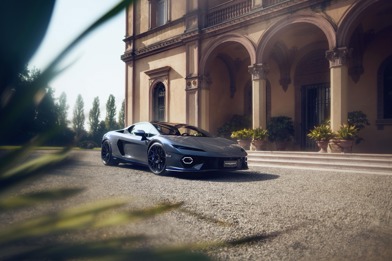Early clues to how Mazda's pioneering SkyActiv-X engine — set to debut locally in the new Mazda3 and CX-30 next year — will perform can be gleaned from recently released Europe market output and fuel economy figures.
The new 2.0-litre four-cylinder unit offers world-first combustion technology that allows a petrol engine to adopt diesel-like compression ignition — with accompanying torque and efficiency gains — when operating under low loads.
SkyActiv-X is effectively a hybrid combustion process with similarities to both petrol and diesel engines.
The engine has a very high compression ratio (not yet public but Mazda has said the prototypes operate at 16.0:1) and is the next step beyond Mazda’s direct injection and high compression SkyActiv-G engine family. It is a higher compression ratio than the SkyActiv-D diesel engine.
SkyActiv-X operates in a conventional spark ignition phase from cold starts and under higher loads but achieves efficiency and torque gains by transitioning to the compression ignition phase across most normal operating conditions. Mazda estimates the engine runs in the compression ignition mode in about 90 per cent of driving.
The breakthrough is the primary fuel-air mixture entering the combustion chamber can have an air:fuel ratio leaner than 30:1 — more than twice as lean as a modern petrol engine and too lean for a spark plug to ignite.
Controlling a very lean mixture is achieved by injecting a very small — and richer — atomised fuel charge into the cylinder adjacent to the spark plug.
When the spark plug fires it initiates a small "fireball" or "flame kernel" to increase heat and pressure in the cylinder to the point where compression ignition of the lean charge takes place.
Along with burning less fuel and creating a stronger power stroke, further benefits are a lower combustion temperature and a significant reduction in NOx (nitrogen oxide) emissions.
Mazda has called the technology SPCCI (Spark Plug Controlled Compression Ignition) and says it is the next step towards achieving ultimate combustion.
Additional SkyActiv-X efficiency gains come from kinetic energy recovery and electric assistance through the introduction of Mazda’s first 24-volt mild hybrid system.
The Europe market performance figures allow the engine to be theoretically judged by a comparison to two existing Mazda SkyActiv-G direct injection petrol engines.
The 2.0-litre SkyActiv-X output of 132kW at 6000rpm (for Europe models) is significantly above the current 2.0-litre SkyActiv-G which develops 114kW at 6000rpm while the latest 2.5-litre SkyActiv-G develops 139kW.
Torque numbers also fall midway between the two current engines. The SkyActiv-X peaks at 224Nm while the current 2.0-litre engine makes 200Nm and the 2.5-litre develops 252Nm.
Potentially the most significant factor in how the SkyActiv-X engine will perform on the road is the peak torque arrives 1000rpm earlier at 3000rpm.
It’s a little difficult to gauge the full effect on fuel efficiency as Mazda’s European figure of 5.3L/100lkm is for a Mazda3 six-speed manual tested under the new WLTP protocols.
Mazda New Zealand claims Australian-sourced ADR test numbers with 6.2L/100km for its new 2.0-litre hatchback with a six-speed automatic transmission and the 2.5-litre auto is rated at 6.6L/100km.
In terms of progress in internal combustion engine efficiency, SkyActiv-X will lower fuel consumption and emissions by 35-40 per cent compared to the last generation port-injected 2.0-litre MZR petrol engine from 2008.




